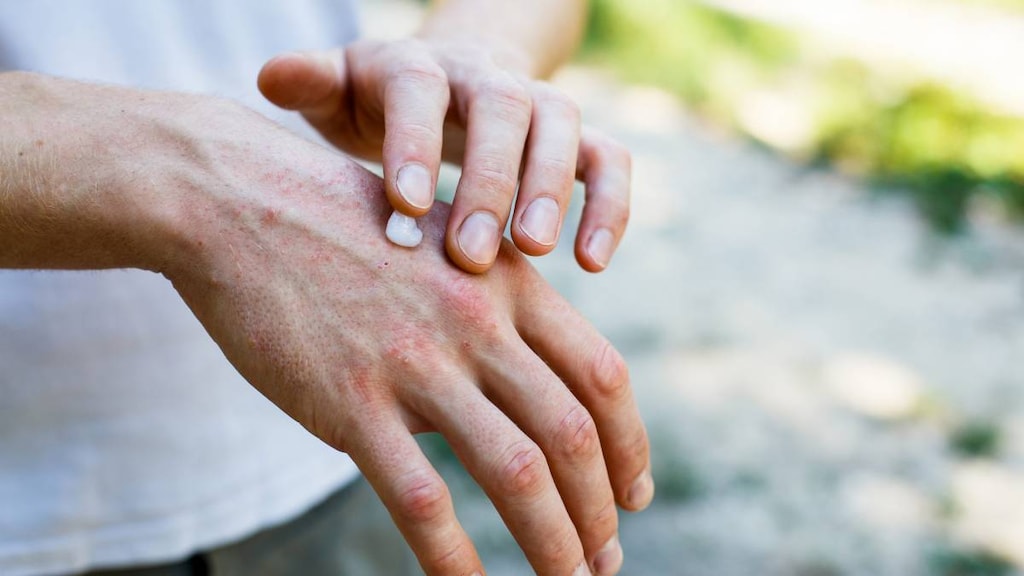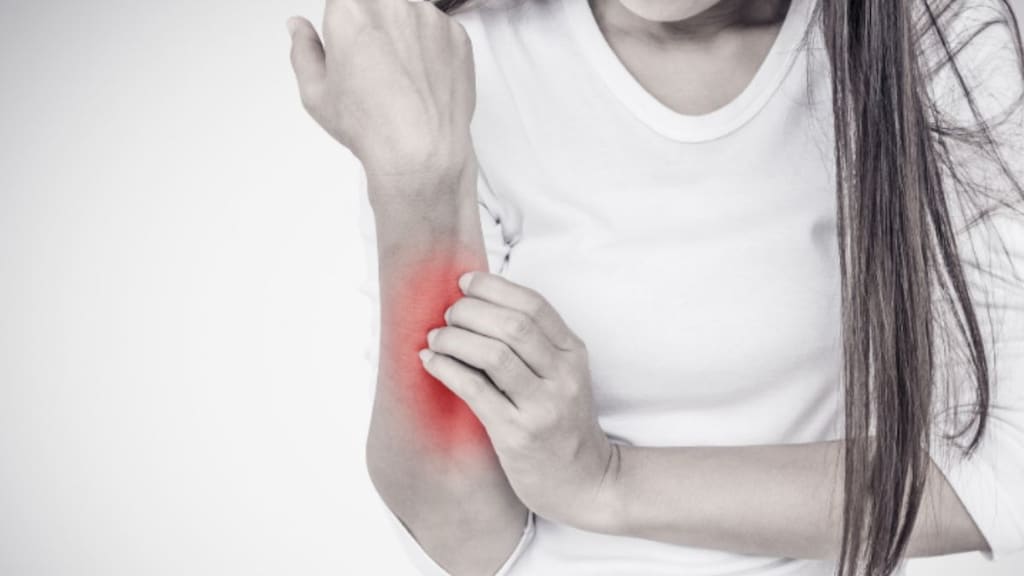
Eczema is a chronic inflammatory skin disease that affects 10 to 20% of children and 5 to 10% of adults. It often begins in infancy as an intensely itchy rash.
Most people can’t help scratching, which leads to further irritation and the possibility of skin infection caused by injury to the skin. The injured skin develops chronic inflammation and its function as a barrier is impaired.
Close to 50% of people with eczema have a family history of allergic diseases.
Treating eczema
Treatment involves rehydrating the skin by soaking in warm (not hot) baths or showers and then promptly applying moisturizers with a low water content to lock in the moisture. Thick creams, such as Nutraderm, Aquaphor, or Eucerin, do a good job. Choose creams without fragrances and preservatives. However, you should limit use of soaps and shampoos to once or twice a week, since soap products exacerbate skin dryness by removing natural skin oils.
Management may also include soothing the ferocious itch with regular use of an antihistamine. A long-acting, non-sedating oral antihistamines such as over-the-counter cetirizine (Zyrtec) may be used during the day and a sedating antihistamines like diphenhydramine (Benadryl) may be used a bedtime, since it can help with sleep also.
If eczema is not controlled by moisturizers and antihistamines alone, then doctors will recommend a prescription or over-the-counter topical corticosteroid to reduce inflammation in the skin. A topical corticosteroid should be applied to the skin before putting on a moisturizer.
Corticosteroid creams and ointments are effective, but a major drawback is that potent steroids cannot be used for more than a week or two on the face—where symptoms often appear—because they gradually thin the skin and cause small blood vessels to break. Long-term use can also cause loss of skin pigmentation.
Avoid extended use in areas of the skin that are warm and moist, such as in skin folds, because of increased absorption. Several trials show that once eczema is controlled, people can take a proactive approach to prevent flare-ups by applying a topical corticosteroid twice a week to areas that have healed but are prone to eczema.
Severe cases of eczema are sometimes treated with medications that suppress the immune system, such as tacrolimus (Protopic) and pimecrolimus (Elidel). These medications have proved effective in lessening the need for corticosteroids, and they can be used on the face.
Preventing of eczema
To prevent or reduce eczema flare-ups:
- Avoid exposure to extreme temperatures, dry air, harsh soaps, perfumed products, and bubble baths.
- Use blankets and clothing made of cotton. Avoid more irritating fabrics, such as wool. Avoid stiff synthetics, such as polyester.
- After showering or bathing, pat dry (rather than rub). That way, you leave a little moisture on your skin. Then apply a moisturizing cream or lotion to trap moisture in the skin.
- Use a humidifier.
Dry skin
While eczema involves dry skin, not all dry skin is eczema. Dry skin can just be part of aging and being outside.
A lifetime of sun exposure damages skin, leaving it thinner and less likely to hold in moisture. Also, aging skin produces less of the natural oils that keep skin lubricated. Some medical conditions, such as hypothyroidism, diabetes, and kidney disease, increase the likelihood of developing dry skin.
Symptoms of dry skin
- Scaly patches of skin, with or without redness
- Itching
- Overall dryness
Treating dry skin
The first line of defense against dry skin is a moisturizer that softens and smooths skin with water and lipids (fats). Some moisturizers attract water to the skin and seal it in, while others prevent skin from losing water by coating it with a thick, impermeable layer. Effective products include the following:
Petrolatum (petroleum jelly). This greasy substance stops water loss. It’s a component of a number of moisturizers and ointments because it’s inexpensive and stops water loss without clogging pores. Because petroleum jelly doesn’t contain water, it’s best used while the skin is still damp after bathing to seal in moisture.
Oils. Moisturizing oils, such as mineral oil, have the same effect as petrolatum without being as greasy. Oils should also be used while the skin is still damp.
Emollient lotions and creams. These products contain water and oil and are therefore less greasy and more cosmetically appealing than either petroleum jelly or oils. Most also contain an emulsifier to keep the product from separating. Humectants, including sorbitol and glycerin, are used to bind water to the skin and help it absorb moisture. Moisturizers that contain at least one of the following ingredients may be helpful: glycerin, urea, pyroglutamic acid, sorbitol, lactic acid, lactate salts, or alpha hydroxy acids.
Preventing dry skin
The following changes to your lifestyle or environment can help alleviate dry skin:
- Add moisture to the air with humidifiers or a pan of water set atop the radiator.
- In the shower or bath, use water that’s lukewarm instead of hot; hot water can further dry the skin by stripping it of natural oils.
- Choose non-drying soaps that contain no abrasives or irritants. Super-fatted soaps or cleansing bars are less drying than regular, liquid, or antibacterial soaps.
- Instead of rubbing, pat your skin dry after you bathe.
- Apply moisturizer immediately to retain the water your skin absorbed while bathing.
- Wear soft fabrics that won’t scratch or irritate the skin.
If you’re not sure if you have dry skin or eczema, it’s important to contact your primary care physician. You may be referred to a dermatologist if you have chronic eczema.

